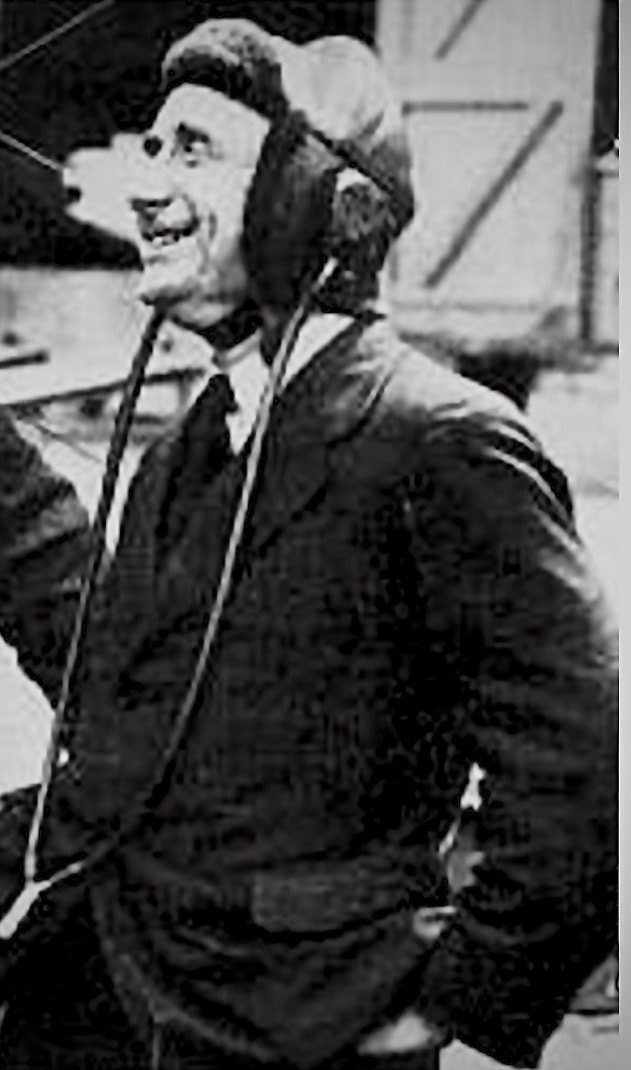|
On return to Adelaide after being wounded in fighting missions over the trenches of the Western Front in World War One, Captain Harry Butler cast a vision for aviation in Australia. “The plane was great in war, but it will be greater in Peace. This…is the beginning of a new era in mail and passenger transport.” To demonstrate, in 1919, he pioneered the world’s first over-water airmail flight in his crimson Bristol MC fighter plane The Red Devil, flying from Adelaide to his hometown on the Yorke Peninsula in South Australia. It was a breathtaking achievement and he quickly drew wondering crowds to watch his daring stunt flying. Many restless young airmen like Harry finished the war looking for further challenges. Englishman Len Daniels, who had earned his wings piloting bi-planes dubbed ‘the flying bedsteads’ with the Royal Flying Corps in Egypt, arrived in Australia in 1922, in search of a better climate and a theatre to match his passion to be an active missionary. The newly formed Bush Church Aid captured his interest. He was met in Sydney by his new boss S.J. Kirby, who immediately put him on a train to Hay, 700 km away in the Riverina. From there the local bishop proceeded to drive him in withering forty degree heat, a further 400 km, on rough bush tracks complete with sand bogs, to the remote outback town of Wilcannia on the Darling River.
The young clergyman had travelled more than the length of his native country to begin life as the shepherd of a sparsely populated parish larger than England. In the following three years, Len piloted his T-model Ford thousands of kilometres loaded with fuel and spares, shovel and wire netting for negotiating sand dunes plus an axe for cutting firewood, bringing counsel and companionship to people on scattered sheep stations. It looked like his hunger for adventure was being well and truly satisfied, but there was another exciting chapter awaiting him. While reporting his arduous life at home in England, a visionary lady heard Len was a pilot and gave him cash with the instruction to pay for an add which read, ‘WANTED - a plane for church work in the Australian Bush.’ The idea caught the imagination of the press and by the end of his tour, the astonished Len had enough to purchase a Cirrus Moth which arrived crated in Melbourne in 1928. The pioneer bush pilot crash-landed en route from Hay, but kindness from a station owner and support from BCA got him airborne again. Only a handful of pilots were brave enough to fly in the Far West in those days. Nancy Bird, Australia’s first woman commercial pilot, told me when she visited Bourke, “Australia is a country God-given for flying.” She also spoke of the anxiety of flying over vast tracts of lonely flat country north of Wilcannia with the Rev Stanley Drummond’s Far West Children’s scheme. She carried bush nurses to Wanaaring and Yantabulla and in emergencies became a flying ambulance driver. Nancy arrived in 1935, a few years after Len took to the air to become the first flying padre in the world. Both of them told of adventures flying without instruments, having only basic maps, navigating by compass and watch, flying low enough when needed to follow tracks or railways and landing on roads in townships or in rough paddocks next to homesteads. There were no meteorological reports, so it meant keeping a sharp eye out for whirlwinds and storms. When hazardous landings in remote locations damaged their planes, running repairs with wire, string or perhaps a broom handle got them back in the air again. During his ten-year stint out West, Len delighted in being able to harness his two great passions – ministering the gospel of Jesus and soaring high in the clouds. He revelled in the absolute quiet – ‘God’s silence’ he called it, where ‘the plane moved like a beautifully balanced, living thing.’ He learned to love the harsh and beautiful Corner-country north of the Darling and to value the hardy people who lived there, whether Aboriginal or white. I’m not certain that bold Harry Butler had a flying preacher in mind when he predicted the plane would be a greater instrument in peace than in war, but Len Daniels helped make it a reality. Within a decade, BCA developed an airborne medical wing which covered South Australia. Len also helped Rev John Flynn in the early days of the Flying Doctor Service. He may not have earned fame as a daring stunt flyer like Harry, but without doubt the unassuming padre wrote a unique chapter into both aviation history and the spiritual life of Australia.
1 Comment
John G
2/5/2023 02:59:54 pm
Another great story of how stuggles are overcome by being involved with good people wanting to do God's work and help to spread the word to all areas of the outback.
Reply
Leave a Reply. |
AuthorJoin The Outback Historian, Paul Roe, on an unforgettable journey into Australia's Past as he follows the footprints of the Master Storyteller and uncovers unknown treasures of the nation. Archives
October 2023
Categories
All
|
|
Sponsored by
|
Privacy Policy
|
|
Copyright 2020 by The Outback Historian
|
Site powered by ABRACADABRA Learning
|




 RSS Feed
RSS Feed

